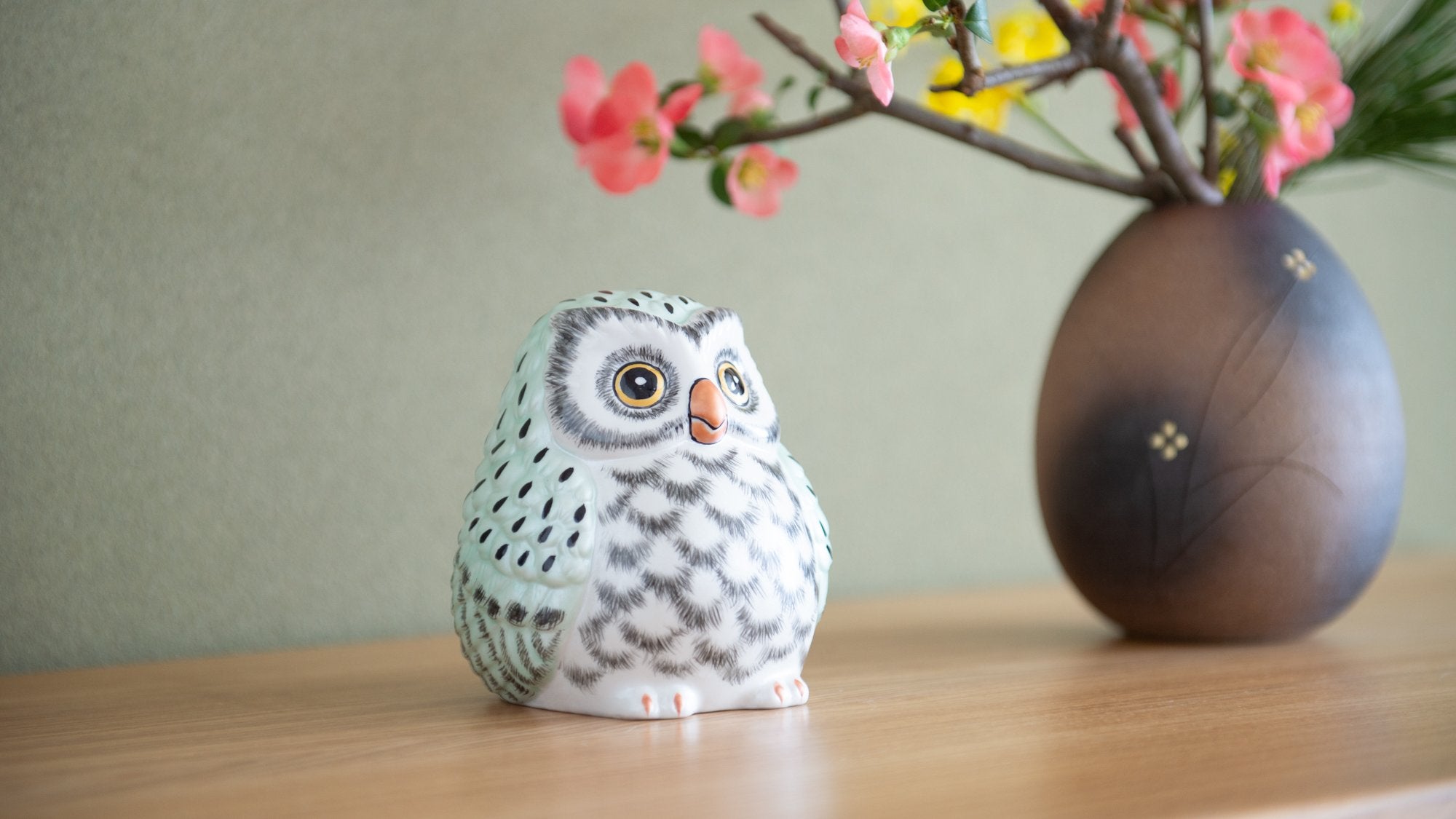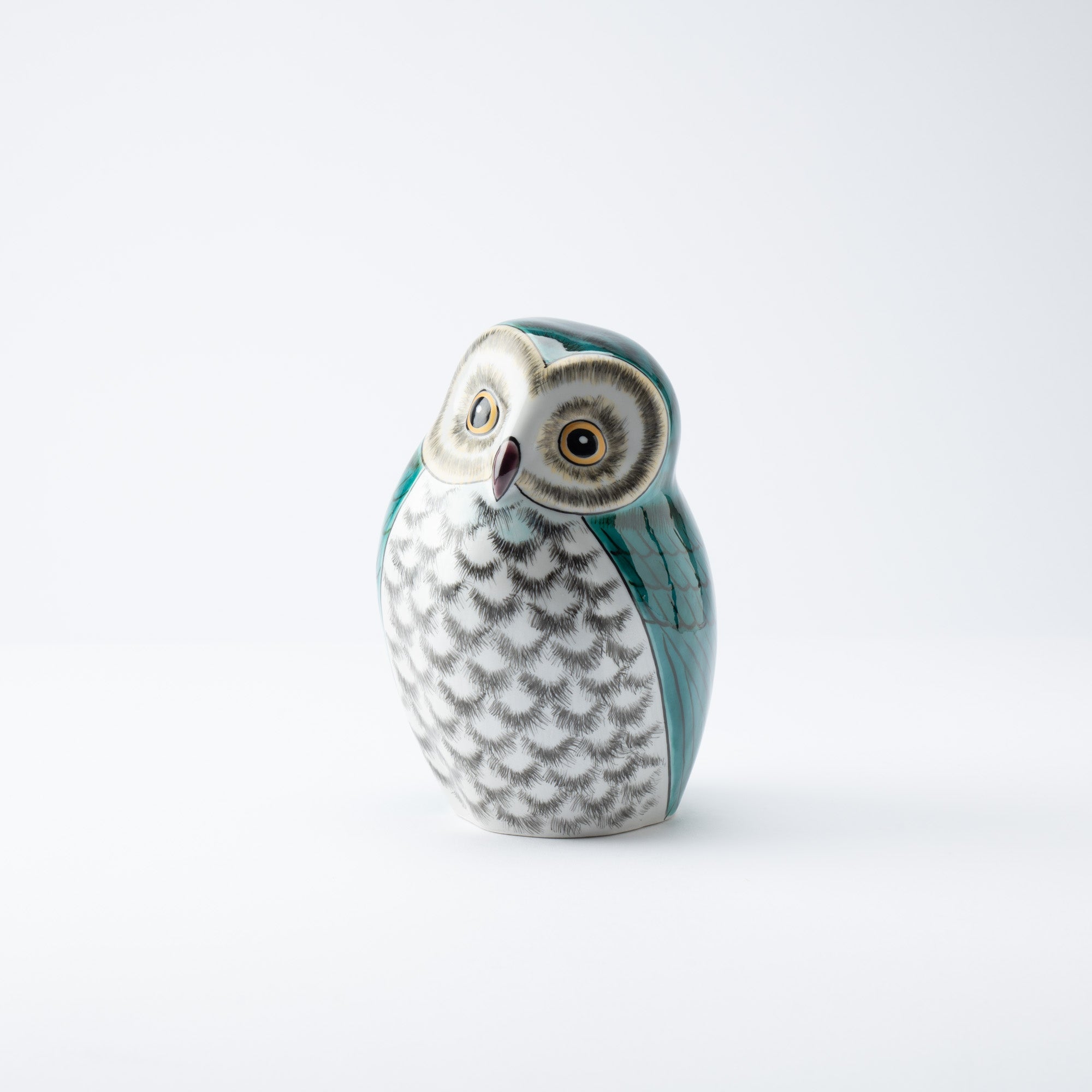
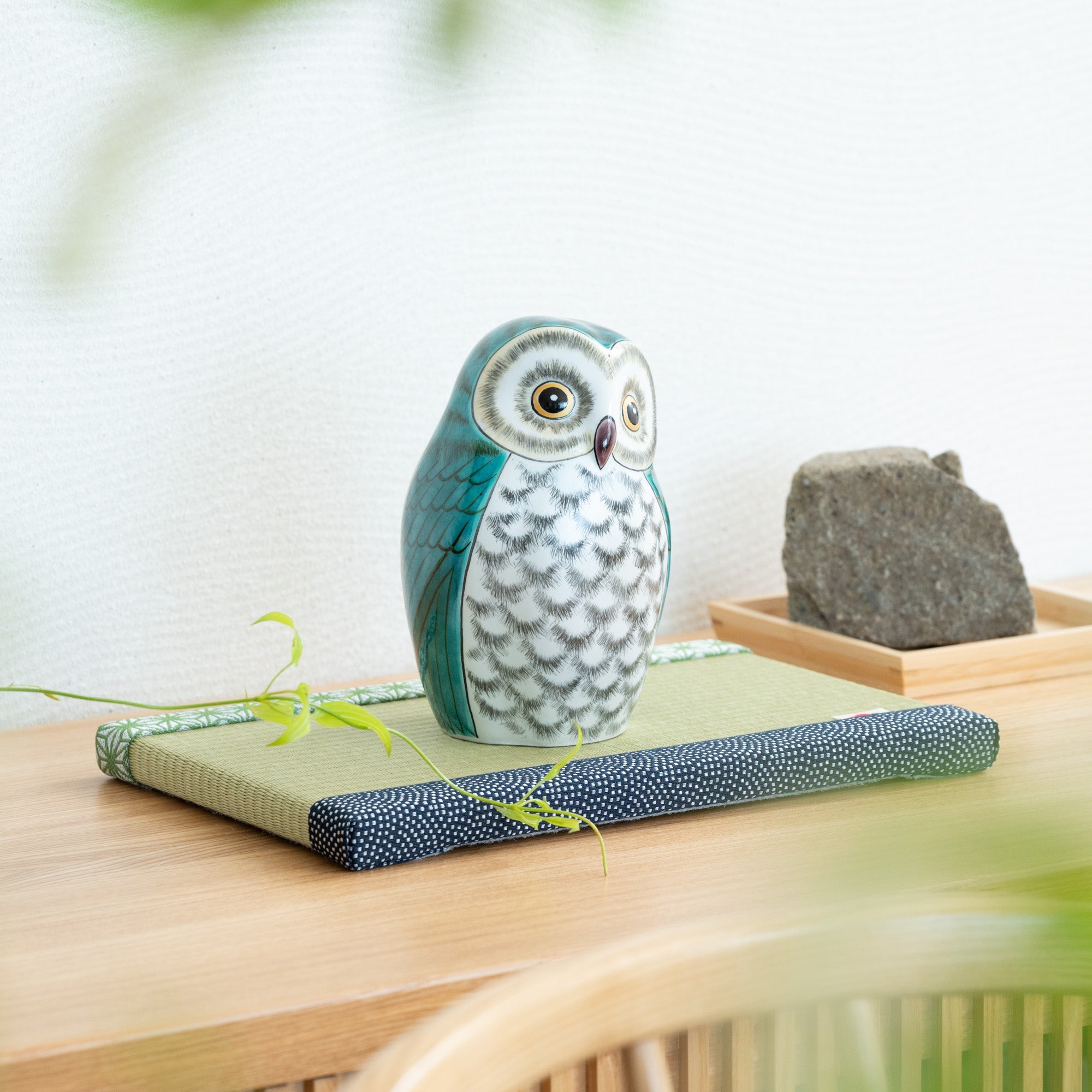
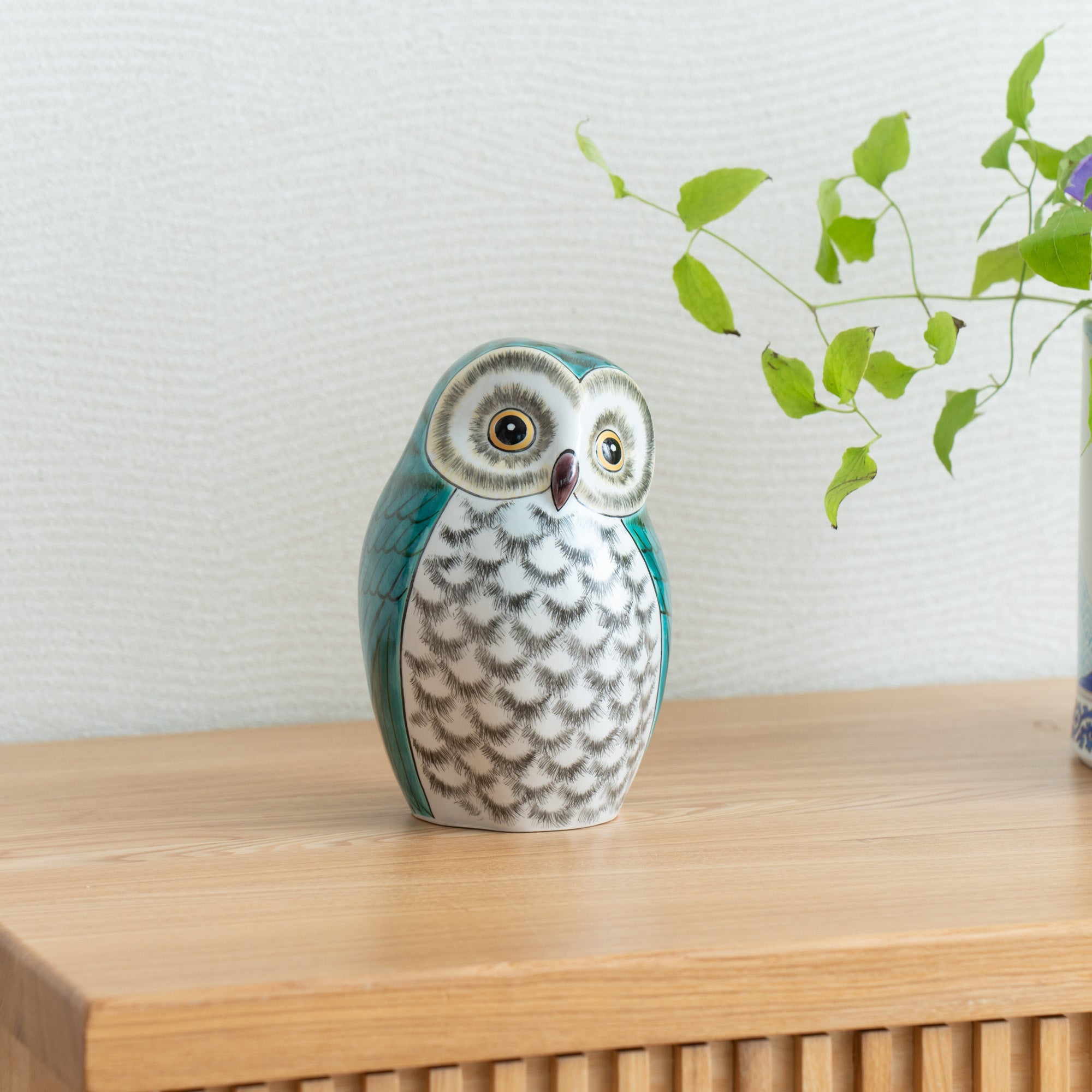
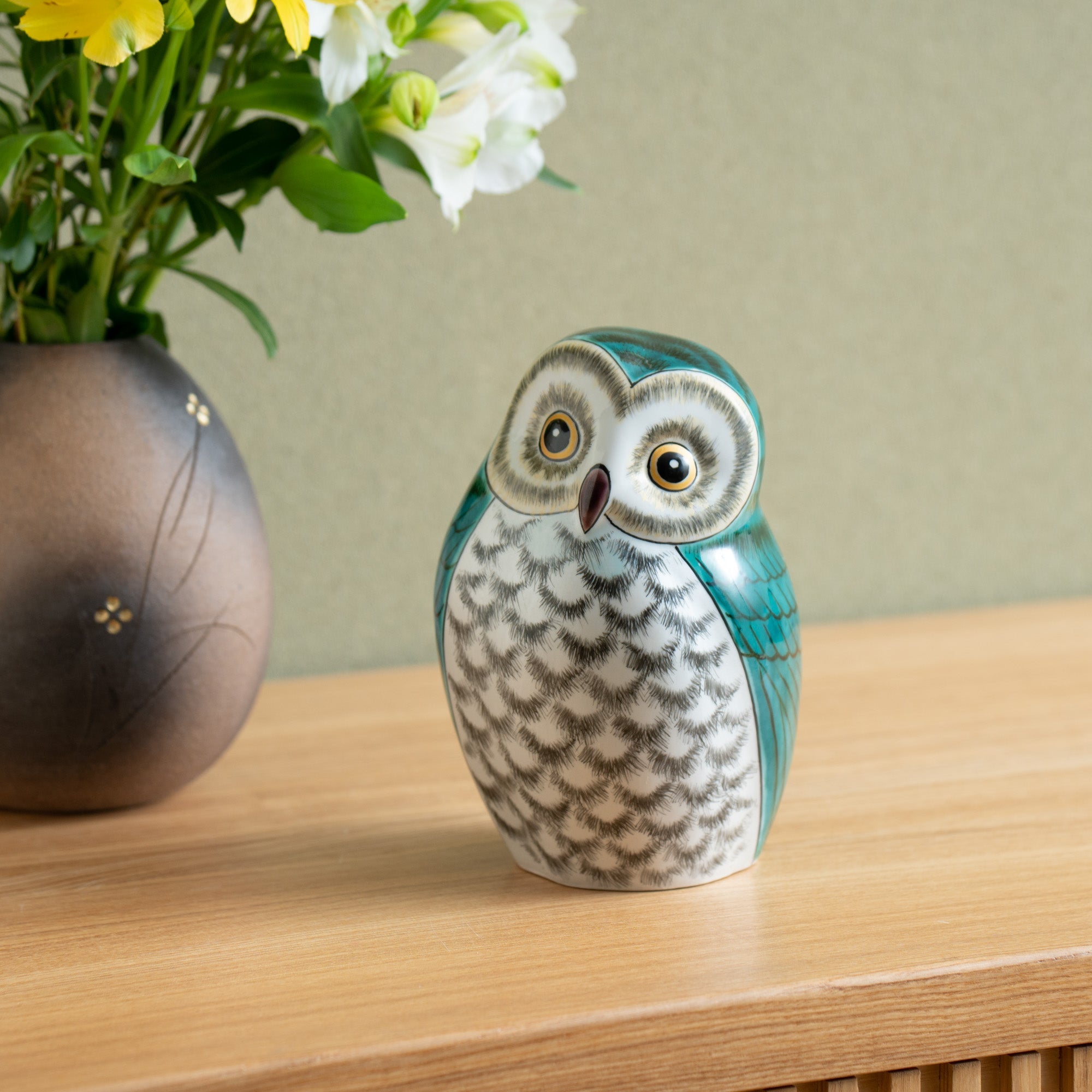
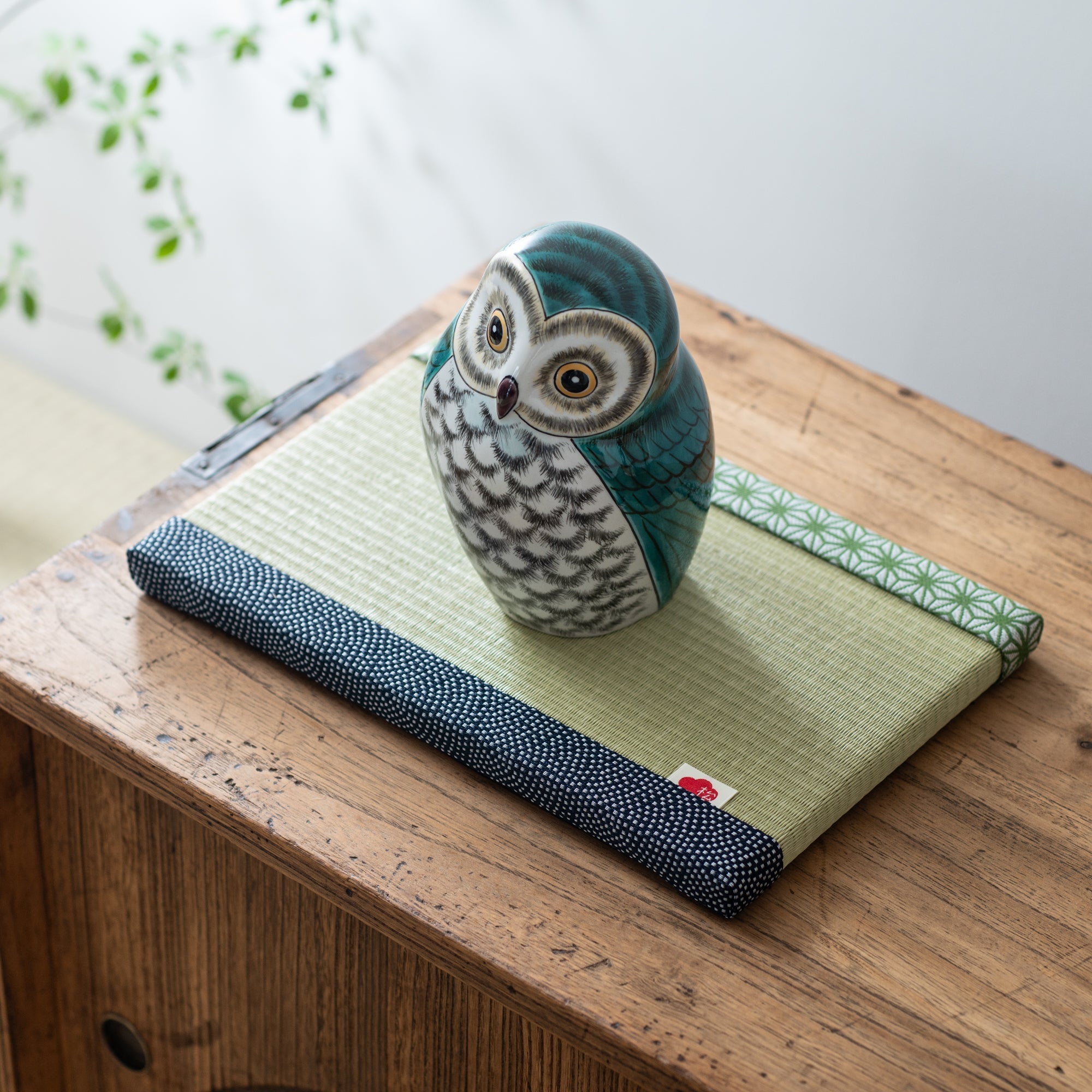
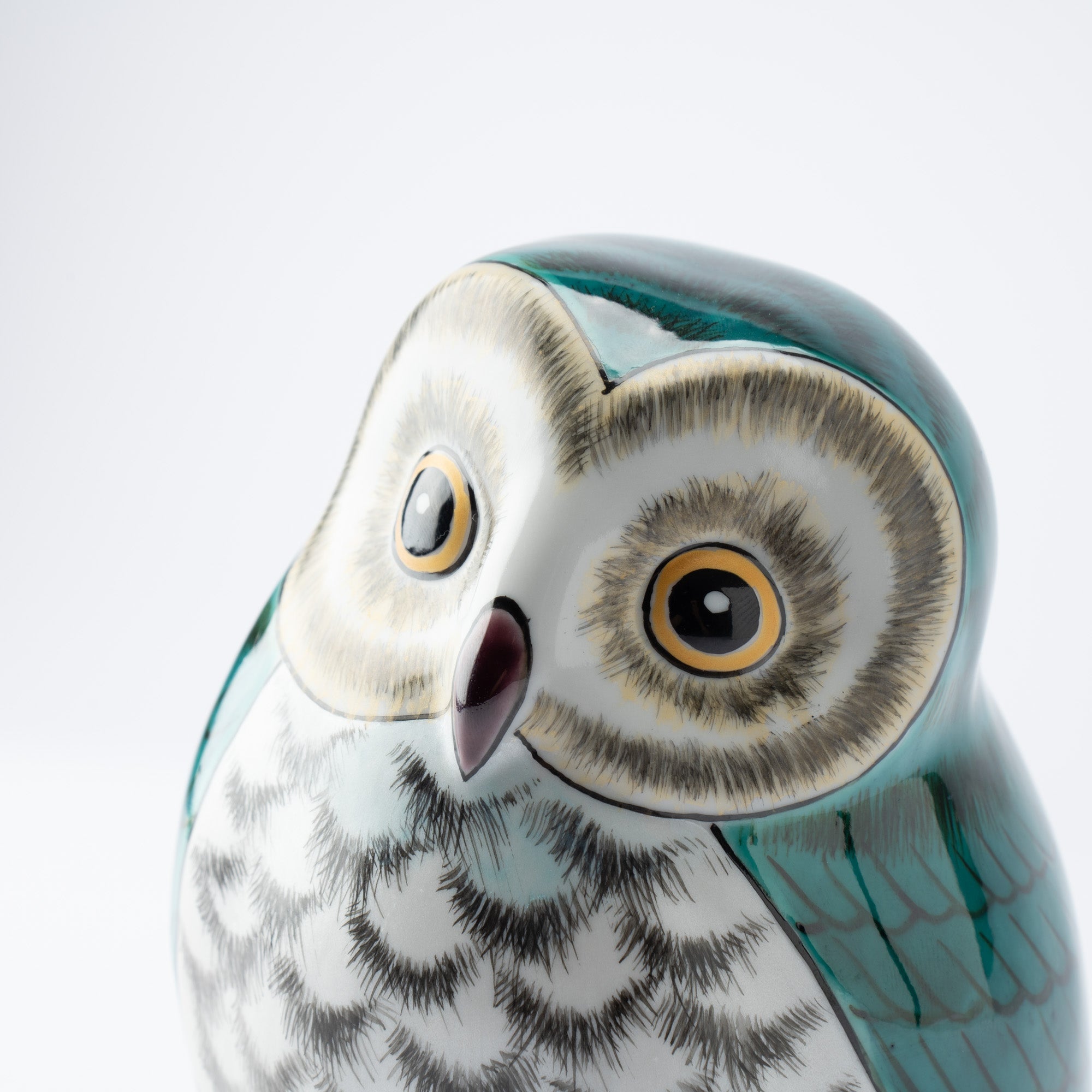
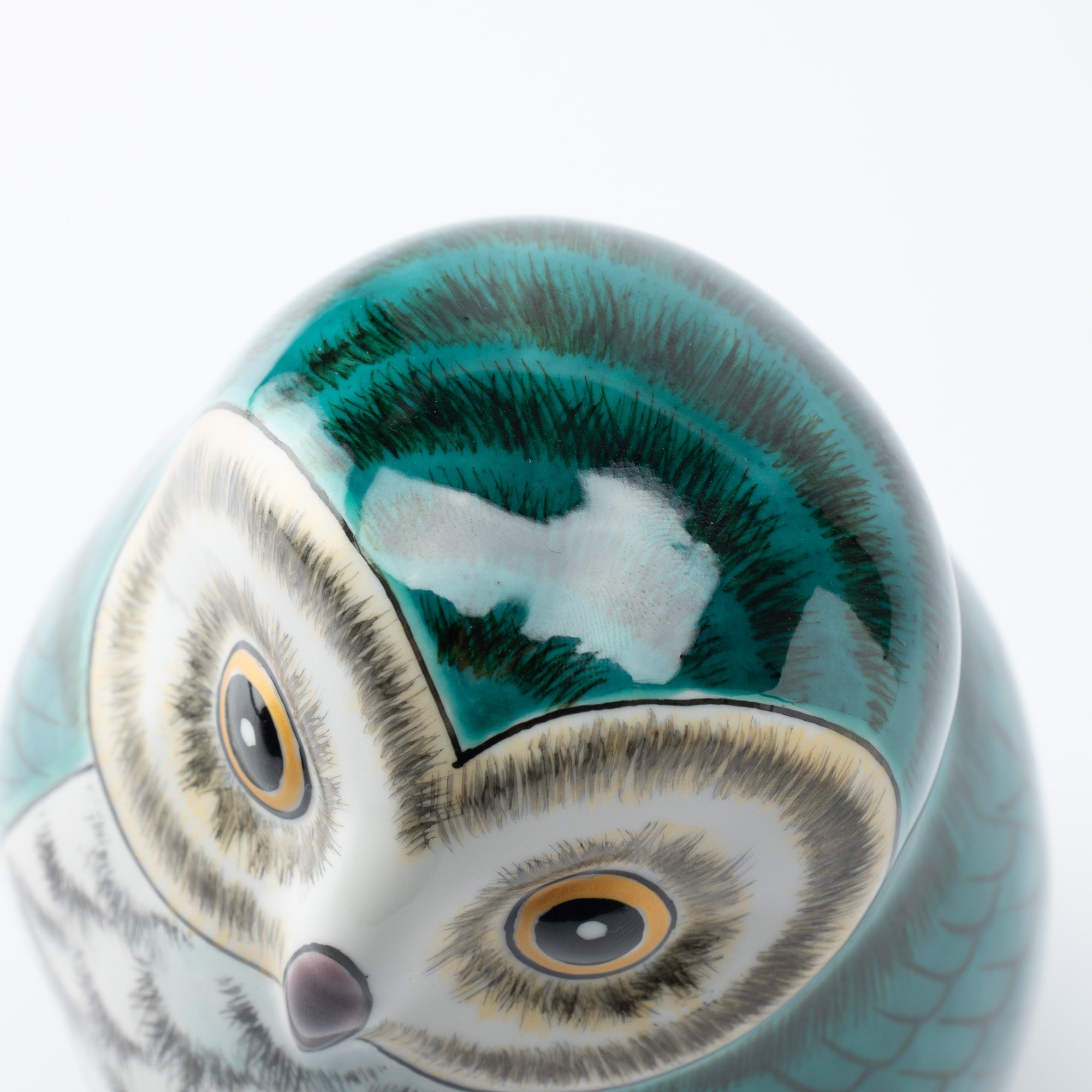
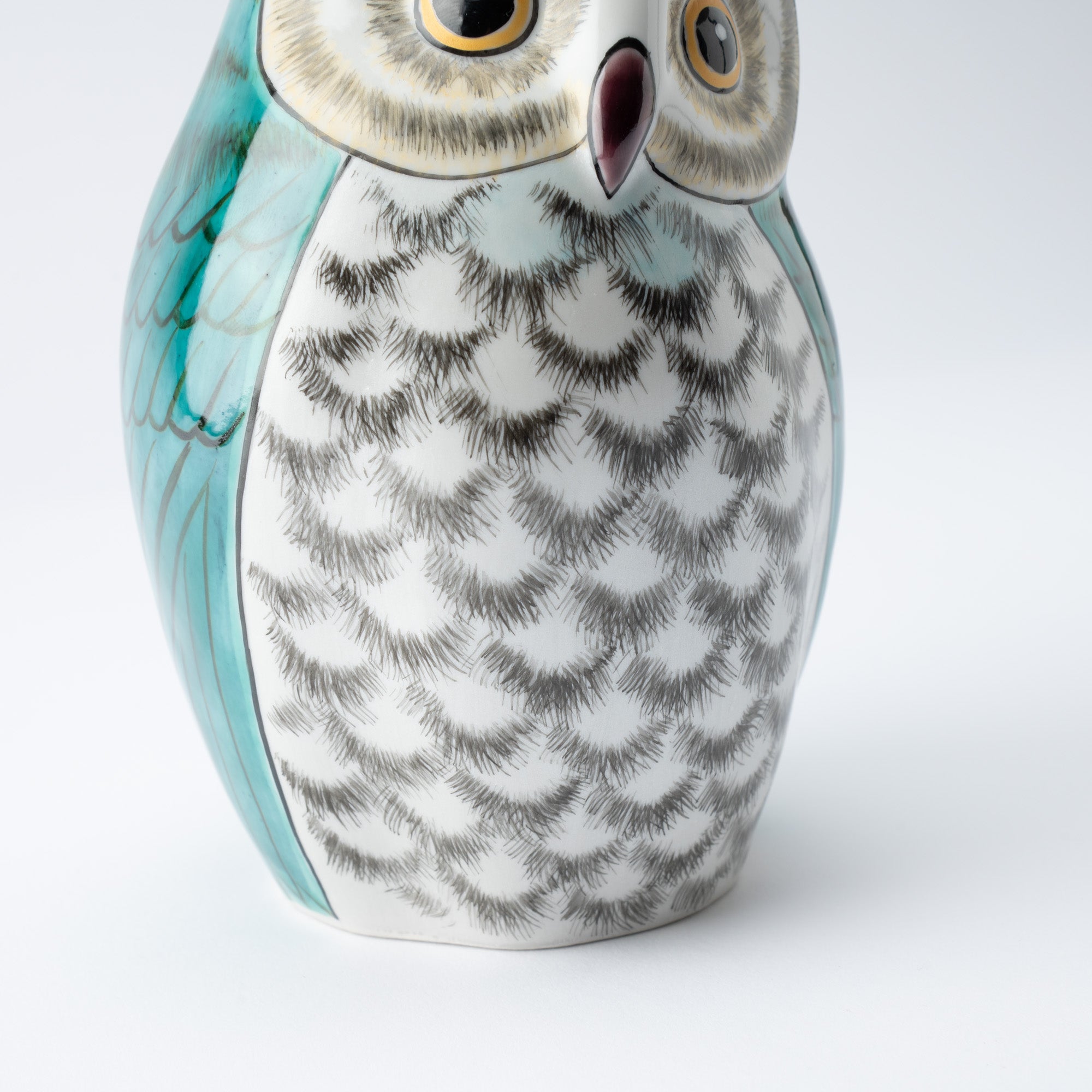
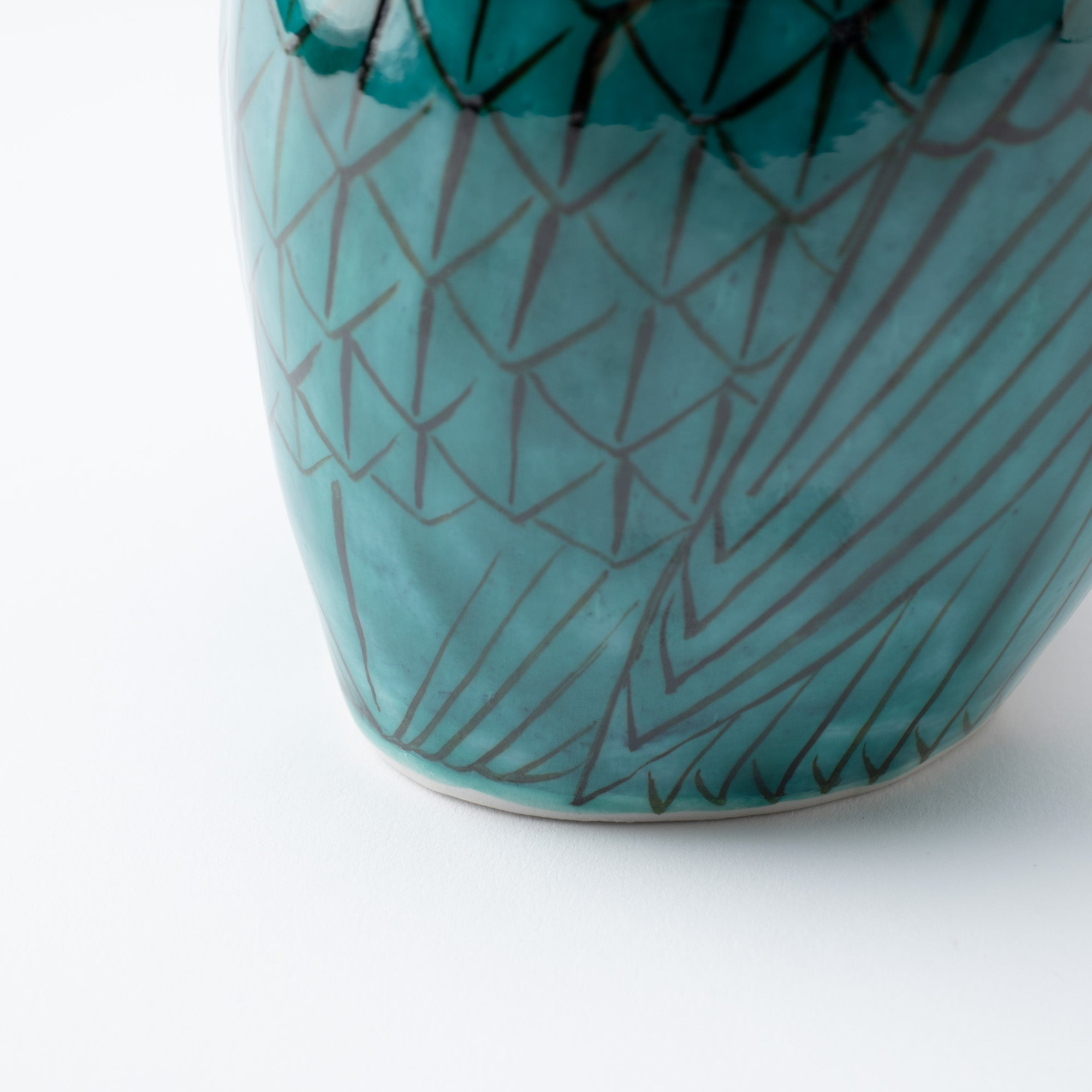
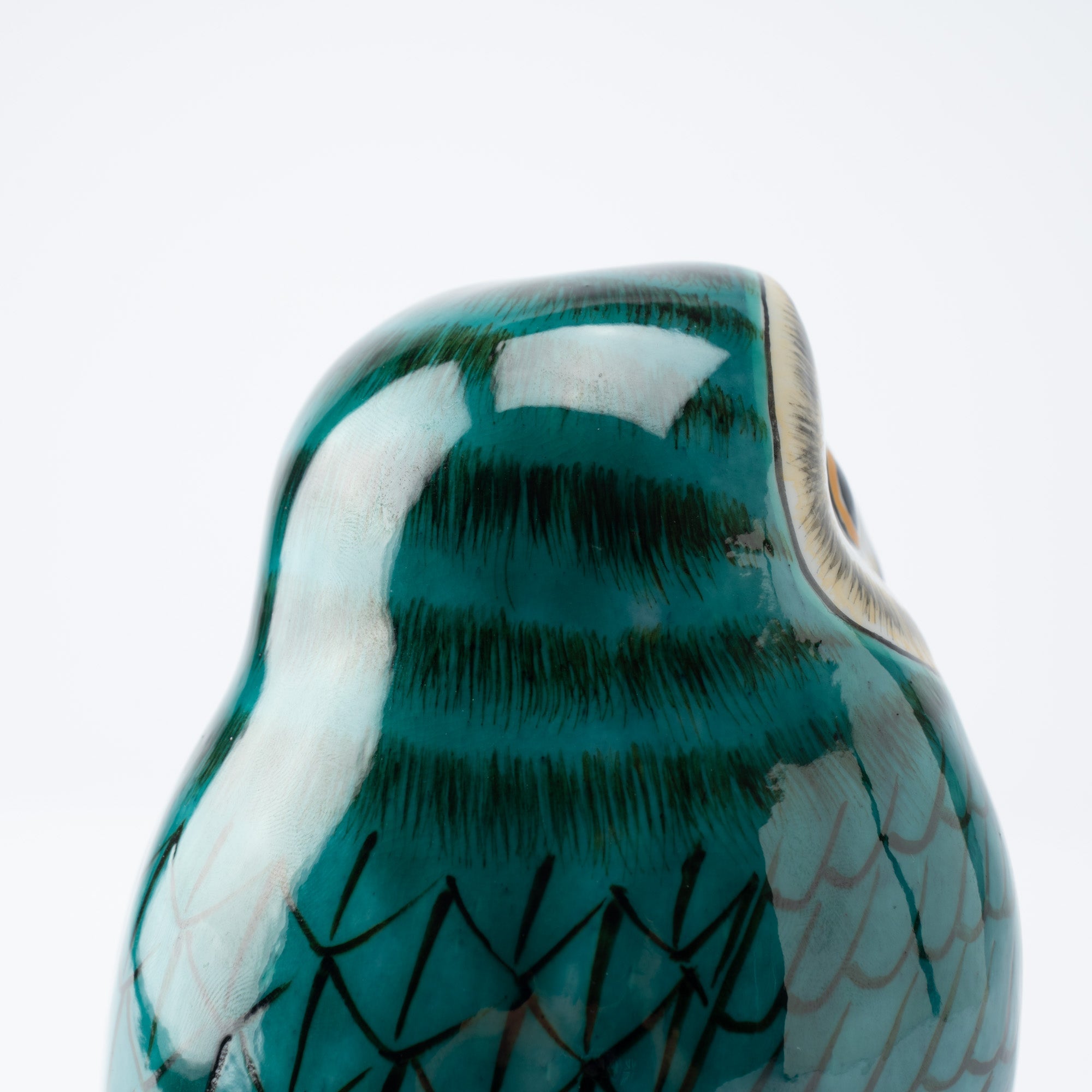
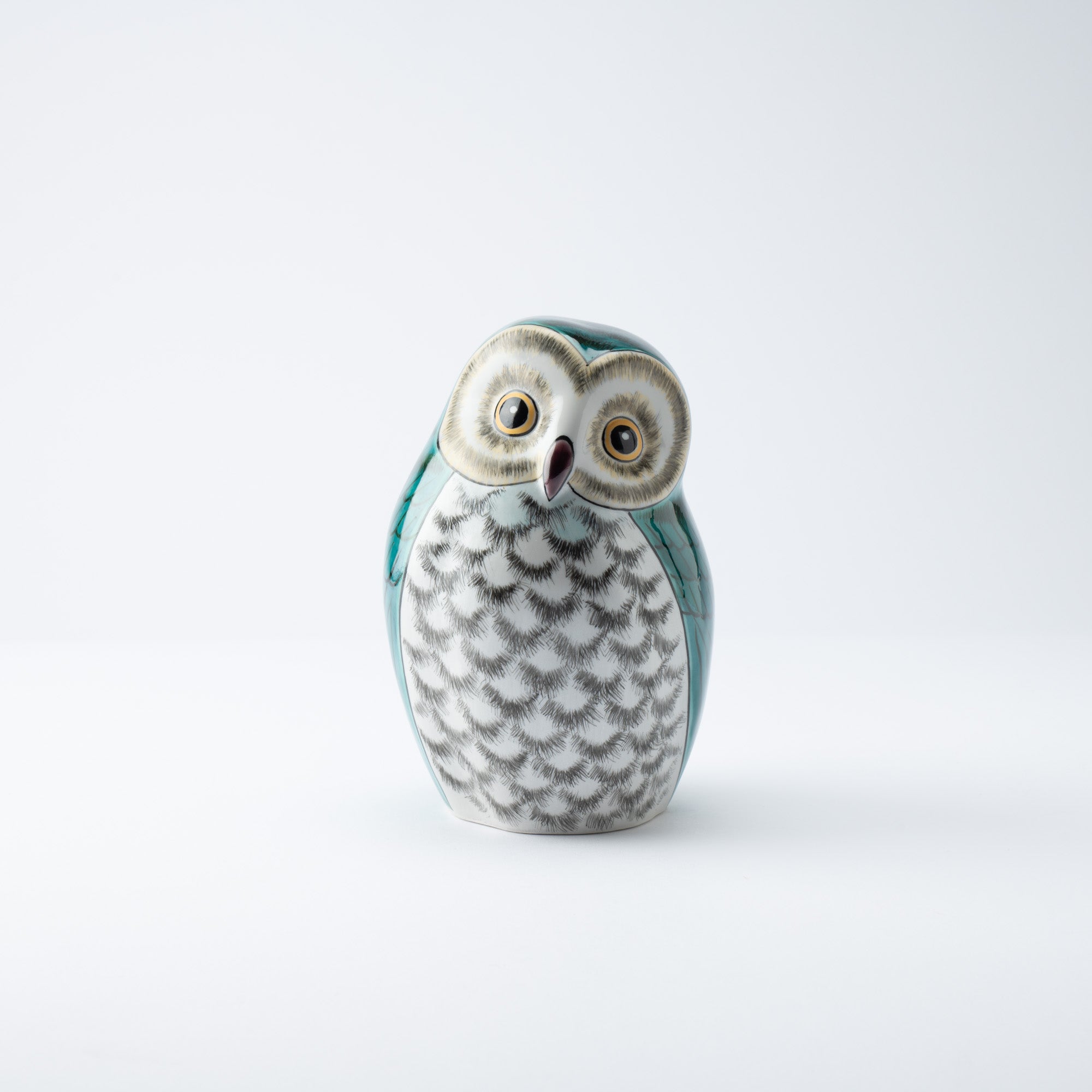
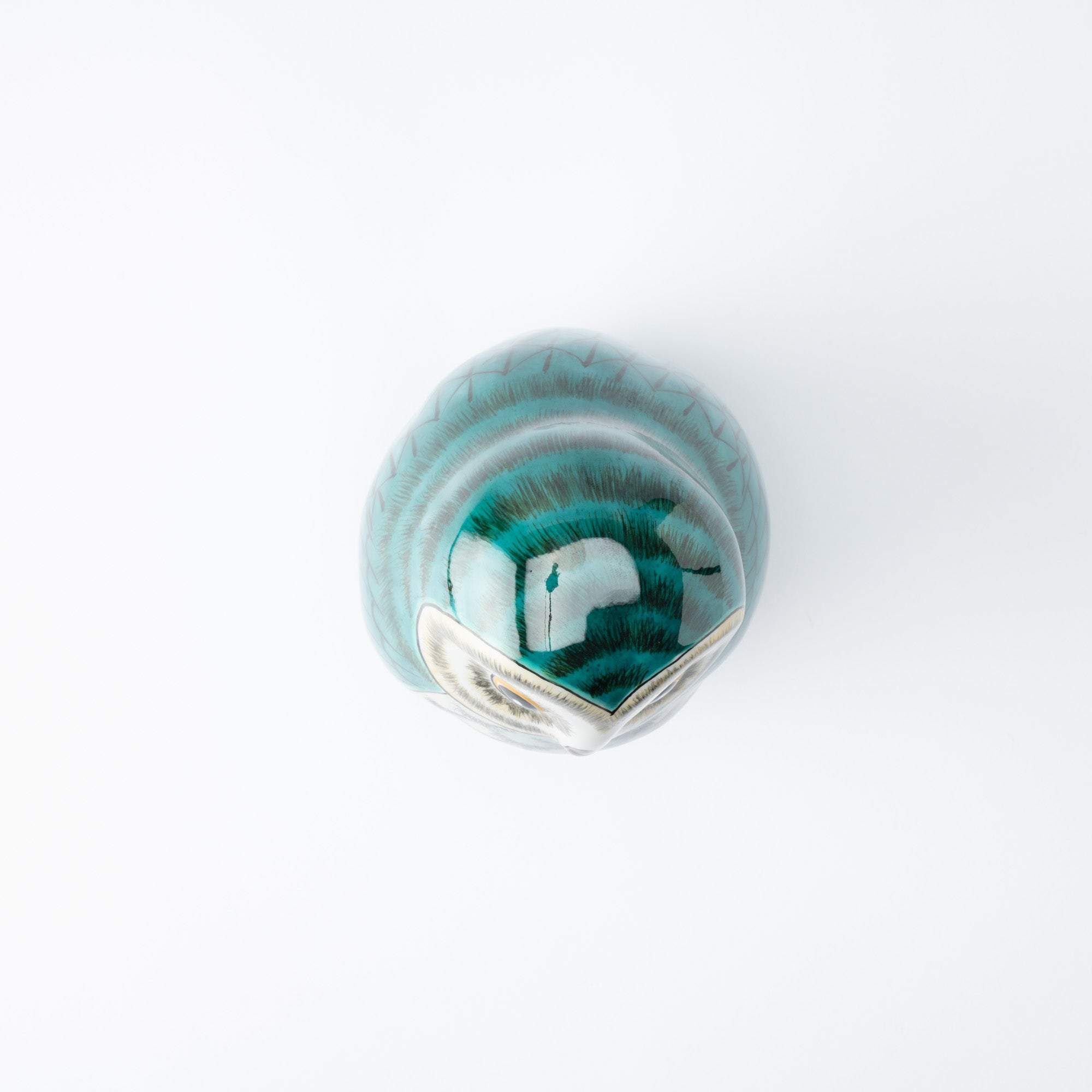
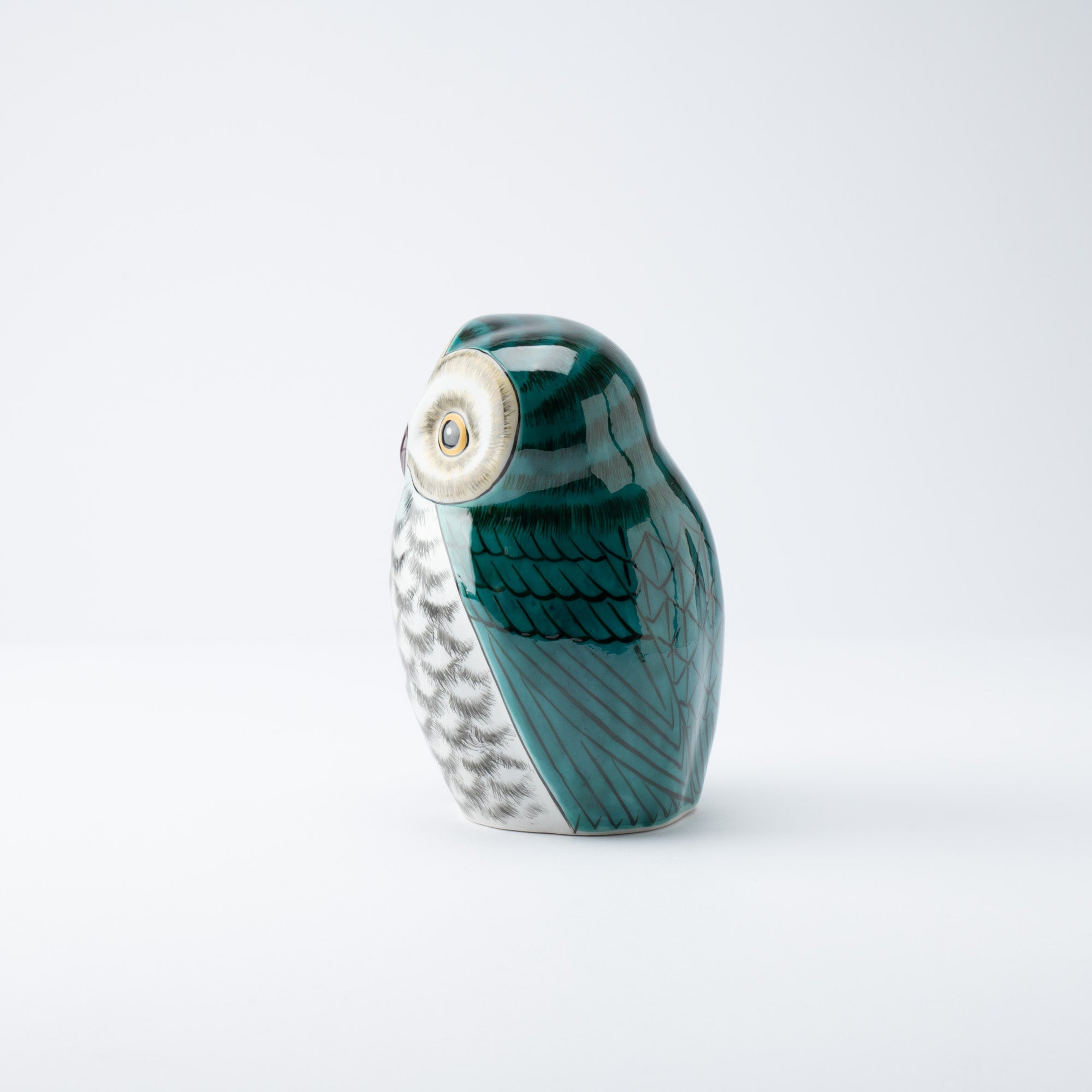
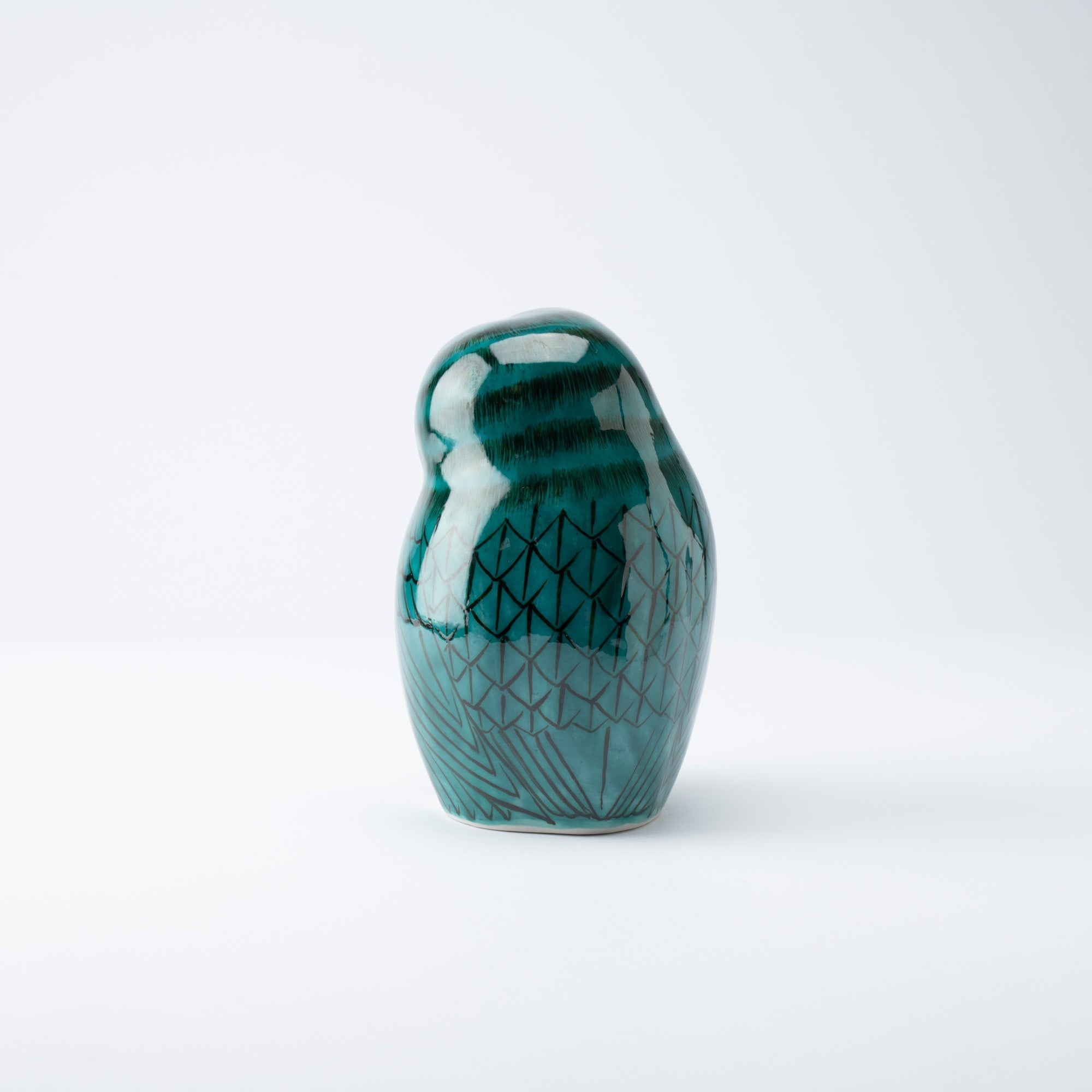
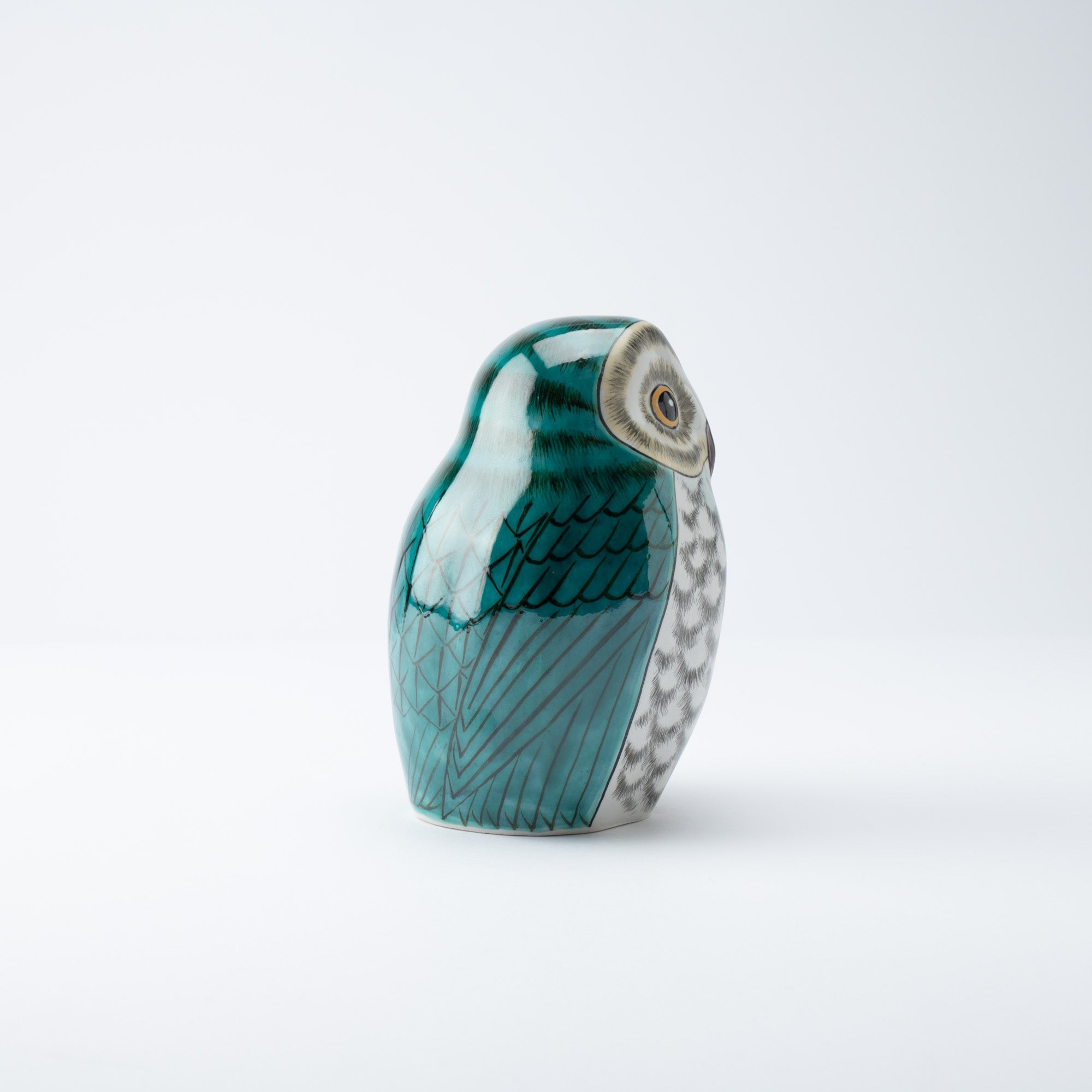
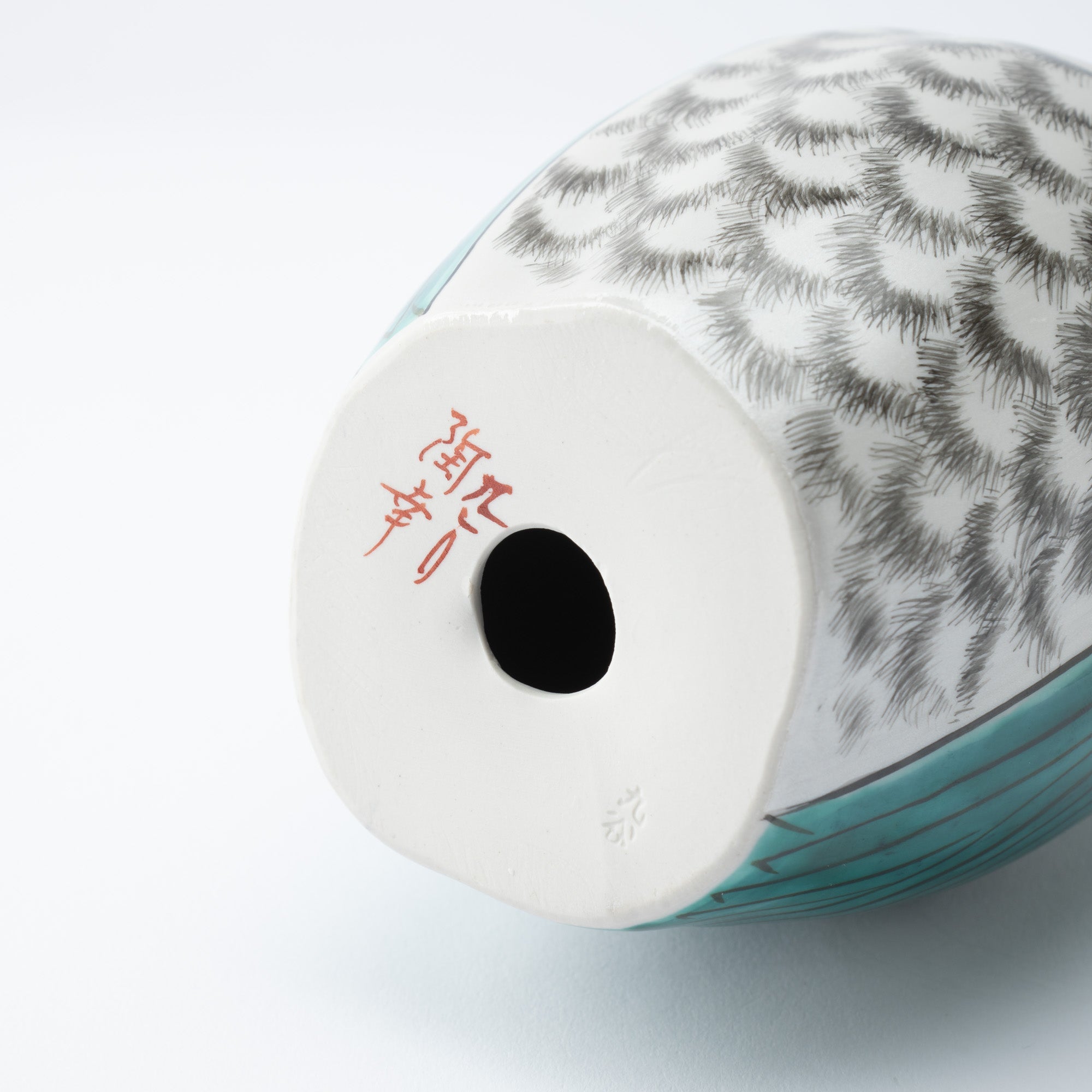
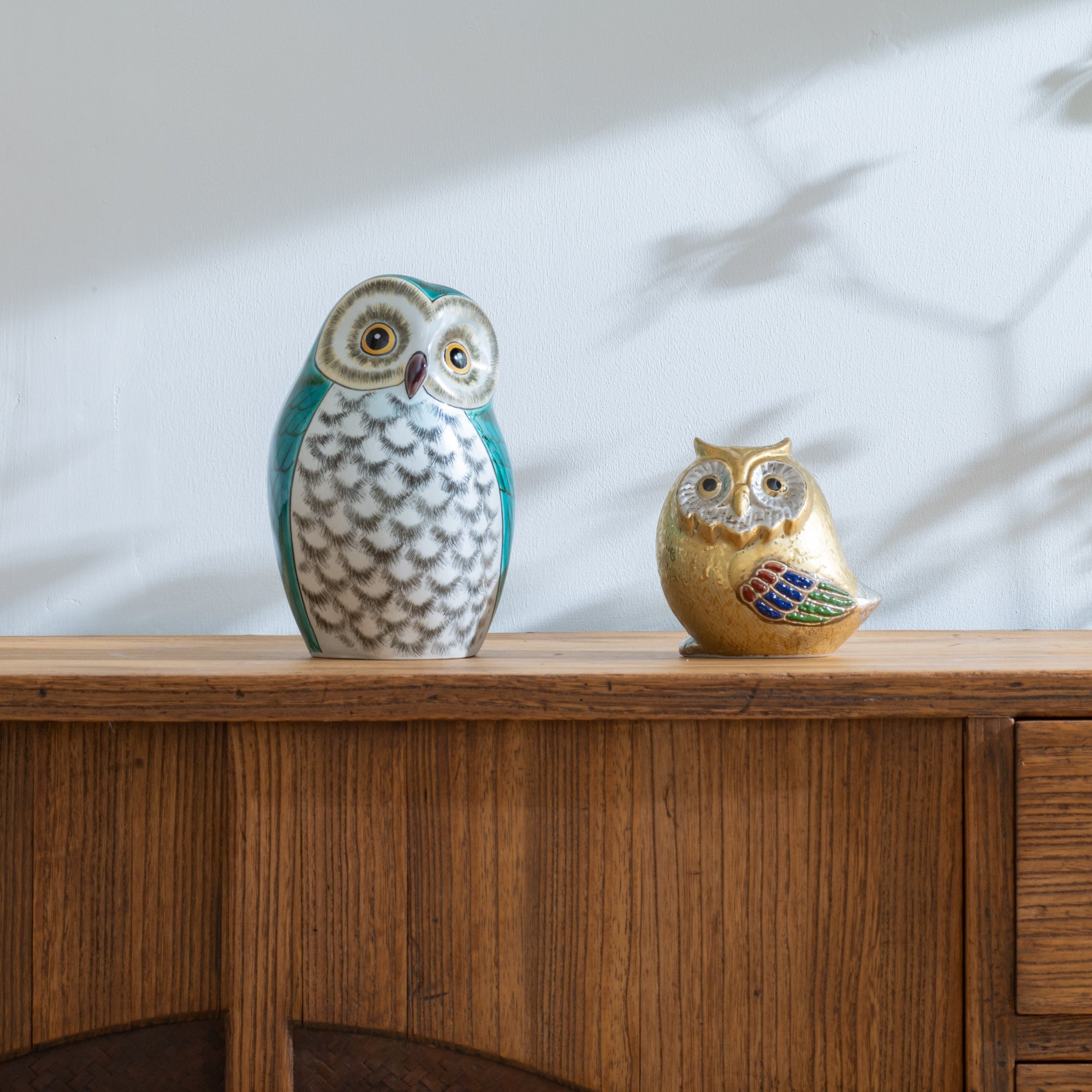
Green Glaze Owl Figurine
Estimated Shipping Widget will be displayed here!
This is an enchanting blue-green owl Japanese figurine, beautifully crafted from Kutani ware porcelain. The technique using lead glaze is considered one of the earliest artificially glazed ceramics in Japan, and it allows for the emergence of its unique green color.
The area around the eyes is adorned with a golden hue. Displaying a sacred and gentle glow, the owl's eyes draw you in as you gaze upon them. Delicately painted lines give a lifelike softness to the owl's feathers, capturing its natural grace on porcelain. Its chest subtly shimmers in white silver, while a faint touch of blue below the chin enhances its softness and three-dimensionality. The Kutani-style blue-green hue exudes a dignified and refreshing impression, adding depth to the owl's feathers with its varied shades. The item stands quietly but has a strong presence.
In Japan, the owl has long been considered a bird of good omen for prosperity in business. Additionally, it is revered as a symbol of learning and longevity. In European traditions, the owl is esteemed as the god of wisdom, while in China, it is celebrated as a bird that brings happiness.
Owl figurines are said to bring good luck when placed to decorate areas where people gather, such as living rooms and entryways. This is a great gift for people who love Japanese culture and art.
DETAILS
| Quantity | 1 |
| Size | L 8.5 cm (3.3 in) x W 9 cm (3.5 in) x H 17.5 cm (6.9 in) |
| Material | Porcelain |
| Microwave | No |
| Dishwasher | No |
Crafts
Kutani ware is a pottery produced in the Kaga region of Ishikawa Prefecture, with a history spanning over 350 years. It is characterized by the heavy brilliance of the five colors of navy blue, red, purple, green, and yellow that are applied to the bold and daring lines. Its long history has evolved through the tireless efforts and enthusiasm of people who have sought innovation while maintaining tradition.
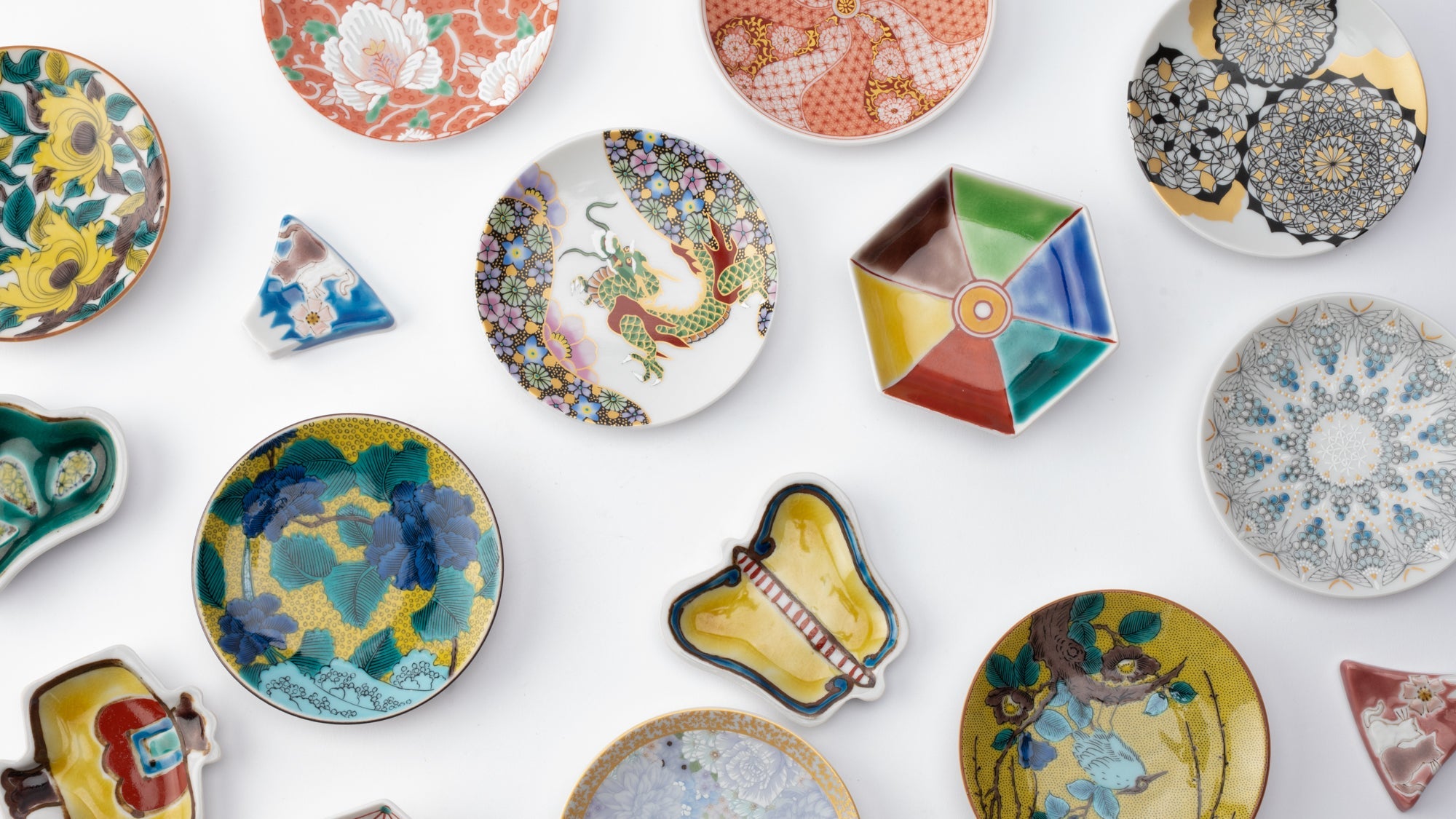
Choose options

















Japanese Dolls & Decor
Experience the timeless charm of Japanese dolls and Japanese figurines, symbols of cultural heritage and artistic craftsmanship that have been cherished for generations. Our curated collection of Japanese dolls showcases exquisite hand-painted details, elegant silhouettes, and the storied traditions that inspire their creation.
Each figurine transforms any space into a corner of refined beauty, inviting a deeper appreciation for the craftsmanship and history that make these Japanese doll treasures so enchanting. Whether you’re a seasoned collector or discovering these cultural icons for the first time, our selection promises to connect you with the enduring spirit and serenity of Japan.
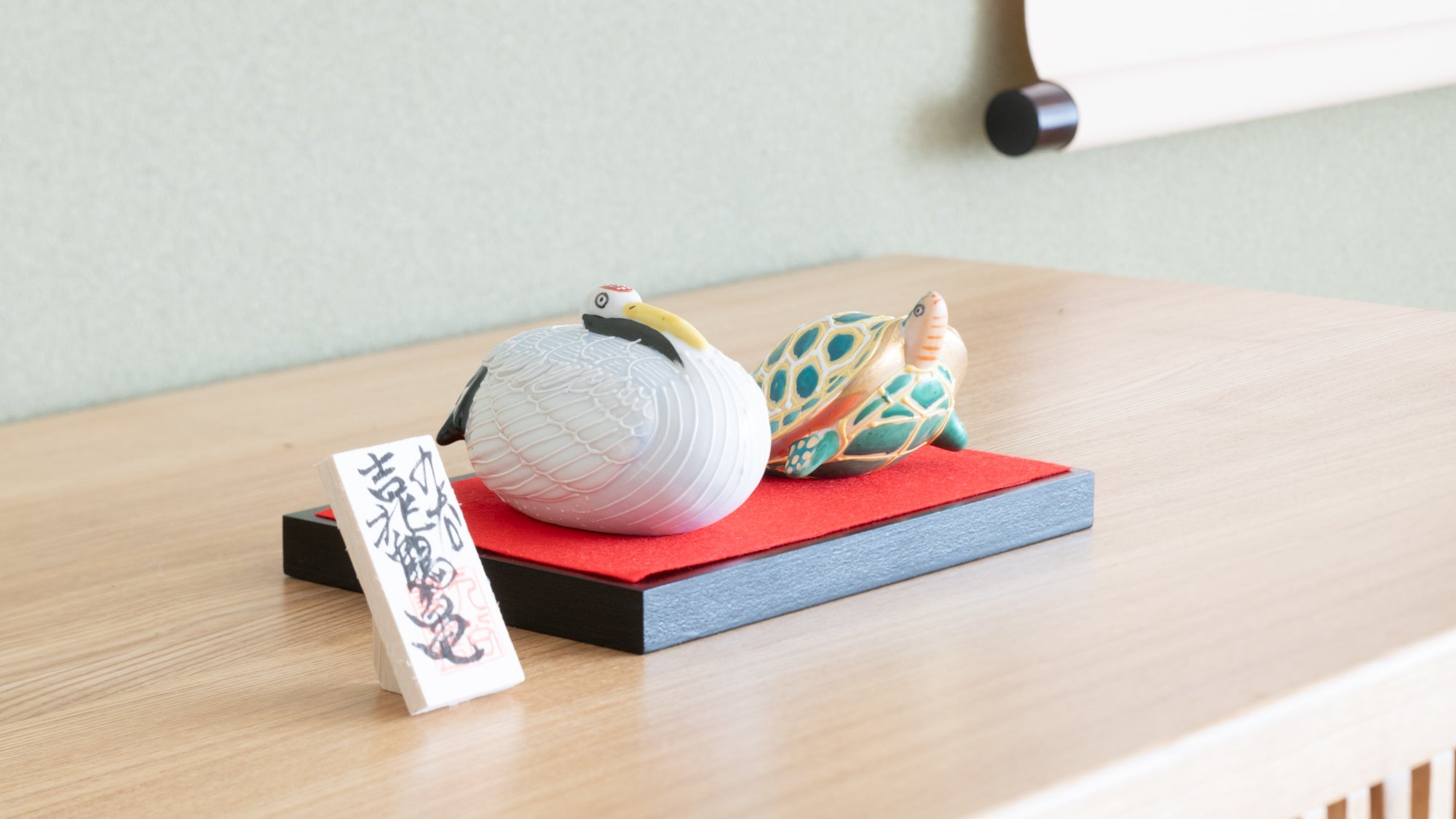
Owl
Owls, with their big cute eyes, are loved around the world as a bird that brings good luck. Their nocturnal habits and excellent night vision are thought to be indicative of good fortune and prosperity. Owls are also associated with wisdom and knowledge in many cultures. Explore items with owl motifs and welcome this charming bird into your home.
